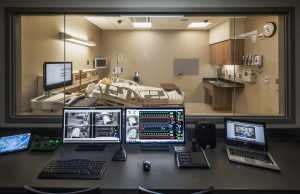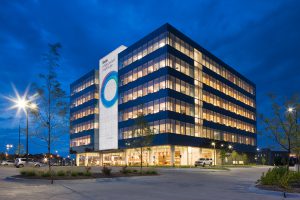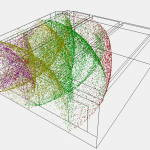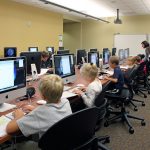How Does Technology Revolutionize Healthcare?
“In 2015, there were just over 1 million telehealth patients. By 2018, that number rose to 7 million…”1
As technology continues to advance, it becomes an ever more essential part of daily life. This is especially true in the healthcare industry where technology can not only save more lives, but make healthcare more cost effective and widely available. Technology systems today are fundamental in maintaining safety, confidentiality, and efficiency in healthcare facilities in big cities and small, rural communities.
Where can I see the technology innovation in a healthcare facility?
Technology is best seen in the systems that make the patient experience pleasant. For instance, a patient wandering and staff tracking system can allow providers to maintain a certain level of remote monitoring, while patients can move about, making them feel less confined and more in control of their care. Likewise, effective security and infant protection systems can give patients and loved ones a greater sense of comfort. Both of these measures help prevent undue stress that can delay recovery.
Effective structured cabling serves as the backbone for reliable communication and network services to support technology and critical medical systems in the building. Examples of these systems include wireless access points that provide data connectivity for mobile healthcare professionals, security cameras for monitoring the facility, and medical imaging devices that enable transmission of high resolution imagery for conducting diagnosis.
Technology can also help patients outside the office, thanks to the rise of telemedicine. Modern audiovisual systems grant healthcare professionals the ability to see and hear patients who are unable to come in. From sick children on family vacations to a nasty cold on a snowy day, patients are able to get care and advice from a trusted source despite physical distance. Telemedicine is especially helpful for patients in rural communities who do not always have convenient access to reliable healthcare. Rather than driving hours to the nearest healthcare professional’s office, patients can receive guidance within minutes, and hopefully, relief soon after.
Audiovisual systems can also be used for collaboration and teaching. Because the healthcare industry is so diverse across the nation and around the world, the value of teamwork cannot be overstated and can often save lives. Additionally, audiovisual systems can bring teachers the capacity to monitor their students’ progress in real time, offering instruction as students practice complex operations in life-like scenarios.
What about future healthcare professionals?
As methods of teaching continue to evolve, a greater focus is placed on collaboration between students and their instructors. To encourage this mutual engagement, modern nursing and health science programs require facilities with a strong wireless network capable of supporting multiple user connections with high bandwidth. This network supports features such as wireless content presentation, video conferencing/distance learning, as well as video content extended from and to multiple sources.
 Extra technology systems such as interactive and virtual technology can further the immersive learning experience provided to students. Interactive touch video walls allow large groups to collaborate on projects, CAD walls equip students with the capability to view anatomy in 3D, and virtual reality spaces enable them to become familiar with a likeness of the environment that will soon become part of their daily lives.
Extra technology systems such as interactive and virtual technology can further the immersive learning experience provided to students. Interactive touch video walls allow large groups to collaborate on projects, CAD walls equip students with the capability to view anatomy in 3D, and virtual reality spaces enable them to become familiar with a likeness of the environment that will soon become part of their daily lives.
Simulation centers, health assessment spaces, skills labs, and other specialized areas all use these same technology systems to afford students the opportunity to increase their proficiency before beginning their medical careers. Students are even able to study their own techniques and receive real feedback on their performances thanks to simulation capture software and equipment within these spaces. This technology gives students the ability to record and playback various lessons and processes. IP based equipment including microphones, loudspeakers, and cameras facilitate an integrated solution across the building local area network. This allows students to be able to view the recorded content in their ideal learning environment whether that is debrief rooms, classrooms, or simulation rooms.
How does this all come together?
Health science facilities use technology to help train tomorrow’s healthcare professionals, but technology is also setting the stage for an integrated healthcare system. Recently, a new building became front-and-center on this stage, bringing together primary care physicians, care coordinators, registered nurses, and clinical pharmacists under one roof. Think Whole Person Healthcare works to treat the whole person, functioning as a clinic, pharmacy, and urgent care, as well as providing services such as dentistry, physical therapy, and mental health. Staff members even have access to in-house labs, x-ray, and CT scans to provide patients with faster test results.

Think Whole Person Healthcare
Technology makes it possible for patients to experience a new level of personal care as their primary care physician focuses more on hearing the patients concerns rather than taking notes. Instead, a real-time transcription is created by a remote transcriptionist known as an “angel scribe.” This transcription then goes into the patient’s record, which is located on the network. This makes it easy for all of the healthcare professionals who are working with the patient from across the industry to easily access the patient’s most up-to-date information, while security measures guard against a break in confidentiality. Patients’ records can also be used by doctors to give accurate prescriptions that can be picked up by patients in the pharmacy on their way out of the building.
Doctors and other various healthcare professionals leverage audiovisual systems when discussing patients’ records and educating them on health action plans. Because many healthcare topics and issues are difficult to explain, Think Whole Person’s immersive audiovisual system design can help patients understand their medical information through graphics and simulations that they can see. Spaces that take advantage of the audiovisual systems include: exam rooms, transformation conference rooms, boardroom, health theater, fitness room, and the presentation/live music performance area in the atrium.
The patient tracking system enables Think Whole Person staff members to monitor the real-time locations for patients and staff. This information can then be used to gage wait-times and how long visits tend to last. If factors such as wait times appear to be negatively impacting patients, the executive management can adjust procedures accordingly to ensure the best quality and efficiency of care.
Where can I learn more?
To learn more about Think Whole Person Healthcare, visit their website.
Bibliography
1Newman, Daniel. “Top 6 Digital Transformation Trends In Healthcare For 2019.” Forbes, 3 Jan. 2019, https://www.forbes.com/sites/danielnewman/2019/01/03/top-6-digital-transformation-trends-in-healthcare-for-2019/#b999d436911e. Accessed 3 December 2019.










